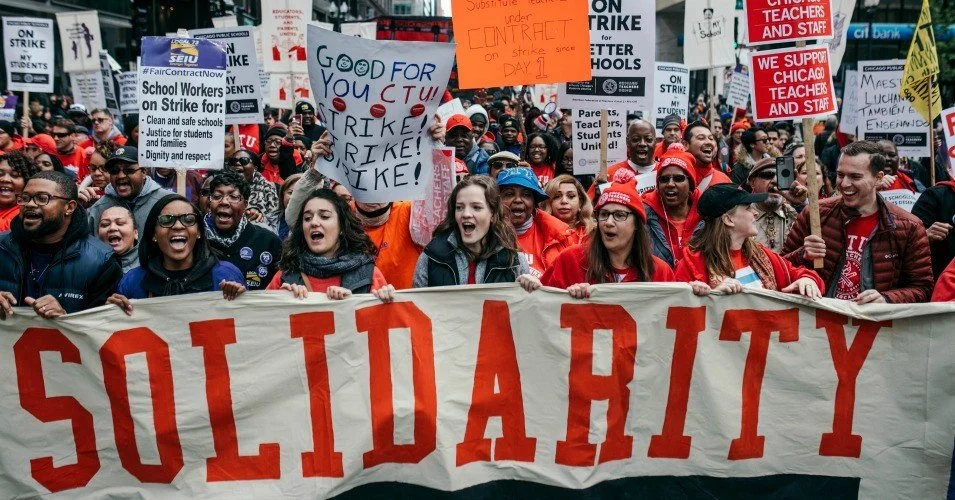The History and Meaning of May Day
By: John Palameda
Today is May Day.
For the rest of the world, May Day has a rich cultural and political history. Originating in ancient Roman spring festivals, contemporary May Day customs were developed in the 14th and 15th century in England. A May Day Queen is crowned, children dance around the Maypole, and May Day baskets are exchanged. But even these quaint practices often bled into working class rebellion, as May Day celebrations often turned raucous and anti-authority in nature, causing the Puritan government under Oliver Cromwell to ban the holiday under the auspices of “pagan influence.” The phrase “to go a-maying”, taken from a Robert Herrick carpe diem poem published in 1648, means to be mischievous, to run outside social convention, to reject religious orthodoxy, to entertain ones fancies, and in the case of the poem, throw away the restrictions of a heavily gendered society.
Yet, while May Day in its traditional form does have political contexts and overtones, as all things do, for workers in the United States May Day is something different. Traditional May Day celebrations have always been less prevalent in the States, first because of the staunch protestant and puritan bedrock of the early American colonists, and later because the day become quite explicitly political. For, contrary to the common belief that May Day originated in tanks rolling down Red Square, it was in the United States that May Day become International Workers’ Day. In an 1885 convention in Chicago, Illinois, an alliance of labor groups headed by the AFL declared that the work day should be no longer than 8 hours, effective May 1st, 1886. On that May 1st, 1886, a massive general strike took place that led to the Haymarket Riot in Chicago on May 4th, where police and workers clashed over the right of workers to have “8 hours for what we will.”
Seeing the political power that May Day was quickly gaining given its synthesis of cultural spring festivities and openly anti-capitalist organizing, and after the 1894 May Day Riot in Cleveland, Grover Cleveland and moderate union bosses set the federally recognized Labor Day to its current date, far away from the a-maying rioters, to the first Monday in September.
Thus, for leftists and working class activists in the U.S., May Day is not merely a celebration of labor, the spring, and the red flag. For us, it is a declaration of political independence as workers, from moderate, compromising union leadership, from the political establishment and its holiday in September, and from reformist mentalities that tell us to wait for livable wages, decent housing, education, gender and racial equality, and fulfilling work. On May Day, we shed the Reaganite mythos of the corrupt, criminal, and impotent union, and stand proudly beside our union brothers and sisters. We unearth the history of American Communists, civil rights leaders, suffragettes, radical musicians, poets, painters, and writers, who have been thrown in the dustbin of history by triumphalist capitalist historical narratives, or gentrified by the liberal establishment. We march together, across the wide spectrum of left ideologies, arm in arm, if only for the day.
On May Day, ultimately, we say openly that we are proud to be workers. We are not, as Steinbeck said, “temporarily embarrassed capitalists.” Nor must we be made to be middle class people, as reformist unions and democrats tell us, as if there is nothing to be proud of about being a worker, that a bartender can’t run the country, that teachers can’t decide policy. Today we are workers, who work long hours to support ourselves and our families, seek to better ourselves with education, strengthen working class bonds through workplace organization, fight against racist separatism and bigotry that divides us, and enjoy the off time we earn with our labor. And that is enough, more than enough, to demand better treatment, fair wages, and recognition as human beings with passions, interests, and unique perspectives that are worth more than $7.25 an hour. On May Day, we don’t settle for “better thans,” we declare without reservation that bosses should no longer exploit the true-hearted intentions of the workers. Bosses should not make billions off the need and desire of workers to buy textbooks for their children, to seek out an education, to raise children, to have a home they are proud of, or to have a job they enjoy doing.
So when we say today is May Day, that has special meaning for workers in the U.S.. In the heart of the anti-worker and anti-communist beast, we declare ourselves to be proudly both, and recognize the gains we are making politically in our unions, local elections, and in our political parties. On May Day, we celebrate those gains, dream of a future free of wage slavery and all its effects, celebrate and march with our friends, union brothers, and comrades, and on May 2nd, we return to our historical and essential duty to bring those aims to every American worker.
